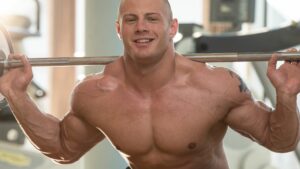Understanding the Goal
The quest for better weightlifting performance often hinges on specific goals. Are you aiming for explosive power, overall strength, or improved technique? Tailoring your squat variations to match these objectives is crucial.
1. Back Squats: A Solid Foundation
The classic back squat reigns supreme for overall strength development. This variation engages multiple muscle groups simultaneously, targeting the quads, hamstrings, glutes, and lower back. Its functionality in mimicking the movements in various lifts makes it a staple in weightlifting programs.

2. Front Squats: Enhancing Technique and Stability
For those looking to refine technique and enhance core stability, front squats are invaluable. Placing the barbell across the front of the shoulders shifts the center of gravity forward, demanding an upright torso and engaging the core more intensely. This translates into improved posture and form during lifts.
3. Overhead Squats: Mastery of Mobility and Control
Overhead squats, although challenging, are potent for developing mobility, balance, and shoulder stability. This variation demands a wider range of motion, highlighting any muscular imbalances or limitations in flexibility. Mastering this squat variation can significantly improve overall body control, crucial in weightlifting maneuvers.

Assessing Individual Needs
Customization is key. Assessing your strengths, weaknesses, and specific performance goals is crucial. Incorporating a mix of these squat variations into your routine, complemented by adequate rest and recovery, is pivotal for progress.
So.
The journey to enhanced weightlifting performance is a dynamic process that demands a tailored approach. By incorporating suitable squat variations into your regimen and focusing on specific objectives, you’ll build a stronger, more resilient foundation to elevate your weightlifting prowess.
Integrating Squat Variations into Your Routine
Designing Your Workout Plan
Now that we’ve identified essential squat variations, let’s delve into how to incorporate them effectively into your routine.
Periodization: The Key to Progress
Structured periodization is pivotal. Dividing your training into specific phases, such as hypertrophy, strength, and power, allows for targeted development.
Hypertrophy Phase: Focus on higher rep ranges with moderate weight to promote muscle growth.
Strength Phase: Shift to lower reps with heavier loads to enhance pure strength.
Power Phase: Incorporate explosive movements to convert strength into speed and power.
Weekly Variation
Integrating different squat variations within a weekly schedule can ensure a well-rounded approach:
Back Squats: Include these in your strength-focused workouts.
Front Squats: Utilize these during hypertrophy phases for technique refinement.
Overhead Squats: Integrate these into warm-ups or as accessory movements to improve mobility.
Focus on Technique
Regardless of the variation, prioritize technique over sheer load. Perfecting form not only prevents injuries but also optimizes muscle engagement, leading to better gains over time.
Recovery and Rest
Remember, progress happens outside the gym. Prioritize recovery through proper nutrition, ample sleep, and active rest days. This allows your body to adapt and grow stronger.
External Resources for In-depth Guidance:
Muscle & Fitness – How to Incorporate Squats into Your Workout Routine
Men’s Health – The Science of Periodization for Strength Training
Healthline – Importance of Rest Days for Exercise Recovery
Breaking Muscle – The Benefits of Different Squat Variations
BarBend – Front Squat vs. Back Squat: What’s the Difference?
T Nation – The Overhead Squat: Master This Lift
Conclusion: Elevating Your Performance
The road to improved weightlifting performance involves not just the squats themselves, but their strategic integration into a comprehensive training plan. By understanding your goals, periodizing your workouts, emphasizing technique, and prioritizing recovery, you’re poised to elevate your weightlifting performance to new heights.
Comparison tabular
| Squat Variation | Primary Focus | Muscles Targeted | Bar Placement | Difficulty | Best Used For |
|---|---|---|---|---|---|
| Back Squats | Overall strength | Quads, hamstrings, glutes, lower back | Across the upper back | Moderate | Strength development, mimics various lifts |
| Front Squats | Technique, stability | Quads, core, upper back | Across the front deltoids | Moderate-High | Improving posture, refining form |
| Overhead Squats | Mobility, control | Full-body engagement, shoulders, core | Overhead, arms extended | High | Enhancing mobility, balance, and shoulder stability |
This comparison table can serve as a quick reference to identify which squat variation aligns best with your specific goals and requirements for enhanced weightlifting performance.
Wrapping up
In the pursuit of optimizing your weightlifting performance, selecting the right squat variation plays a pivotal role. Each variation brings its unique advantages, whether it’s the foundational strength from back squats, the refined technique through front squats, or the comprehensive control gained from overhead squats.
Tailoring your choice to your specific goals and incorporating these variations strategically into your training routine is key. Remember, it’s not just about the weight on the bar but the precision, consistency, and smart progression that ultimately elevate your performance.
By embracing variety, perfecting form, prioritizing recovery, and aligning your squat variations with your training phases, you’re poised for remarkable progress in your weightlifting journey. So, step into the squat rack with purpose, focus, and the confidence that comes from knowing you’ve tailored your routine for success. Happy lifting!

Hey there, it’s Mike Rrsq, the Editor-in-Chief over at Jsquat.com, and I’m absolutely obsessed with all things squat fitness! I’ve been lucky enough to get some serious recognition for my work in this field. With a solid background in the fitness and wellness industry, I’ve been there right from the get-go, helping shape this website into what it is today.
You see, I’m not just the boss around here; I’m also a passionate contributor. I love sharing my insights through my articles, and trust me, they’re not your run-of-the-mill stuff. Each piece I write is a labor of love, filled with my expertise and real-world experience in the fitness universe. So, if you’re into fitness and looking for some inspiration, you’re in the right place!
Related Posts
- The top 4 effective squat Variations 20-year-old females need for better Olympic lifting performance
For a 20-year-old female aiming to enhance Olympic lifting performance, incorporating specific squat variations can…
- The top 3 effective squat Variations 23-year-old males need for better powerlifting performance
Powerlifting is a thrilling sport that demands strength, technique, and dedication. Among the foundational exercises,…
- The top 3 effective squat Variations 28-year-olds need to improve their vertical leap
When it comes to enhancing your vertical leap, squats are a foundational exercise. They work…
- How a 28-year-old can incorporate back squat into a powerlifting or weightlifting program
In the world of powerlifting or weightlifting, incorporating back squats into a routine for 28-year-olds…
- Best 3 most effective squat variations you need for targeting the adductor magnus.
Squat is one of the most effective exercises that you can do to target quads…
- The Best 3 Most Effective Squat variations for targeting the obliques.
Squats are renowned for their ability to strengthen and tone the lower body, but did…
- The best 4 squat variations for improving balance in 63-year-old adults
As we age, maintaining balance becomes increasingly crucial for overall well-being, reducing the risk of…
- Different squat variations That I Do (Explained)
Looking to spice up your squat routine? These are great different squat variations you need…
